Dive into the enduring appeal of Classic Tattoo Fonts with our in-depth guide, showcasing iconic lettering styles, bold typography, and vintage script designs. Ideal for tattoo lovers and artists seeking timeless textual inspiration.
Tattooing, an art form with roots stretching back millennia, has witnessed a fascinating evolution in styles and techniques. Among the crucial elements of any tattoo design, the choice of font stands paramount. It dictates the aesthetic impact and subtly shapes the message conveyed by the tattoo. Classic tattoo fonts hold a special place in this realm, revered for their nostalgic charm and enduring style. This article will journey into the world of classic tattoo fonts, tracing their history, dissecting their defining characteristics, and highlighting the most beloved styles.
Classic tattoo fonts emerged from the nascent days of modern tattooing, heavily influenced by the lettering styles sailors and travelers encountered on their global voyages. These early fonts were characterized by their boldness, elaborate ornamentation, and decorative flair, reflecting the diverse cultural and artistic currents of the era. Over time, classic tattoo fonts diversified into a spectrum of styles, each possessing a distinct personality and allure. Whether you are a seasoned tattoo artist, an enthusiastic collector, or simply seeking inspiration for your first piece, a solid understanding of classic tattoo fonts is invaluable for crafting tattoos that are both meaningful and visually striking.
The significance of classic tattoo fonts extends beyond mere aesthetics. They possess the power to evoke emotions, narrate personal stories, and forge a strong sense of identity. A thoughtfully selected font can elevate a tattoo from a simple design to a profound statement, deeply resonating with the wearer. Given the extensive array of classic tattoo fonts available, it’s essential to grasp the nuances of each style, their historical context, and the emotional undertones they carry. In the following sections, we will comprehensively explore the various facets of classic tattoo fonts, including their defining features, popular styles, and essential tips for selecting the perfect font to complement your tattoo vision.
Understanding Classic Tattoo Fonts
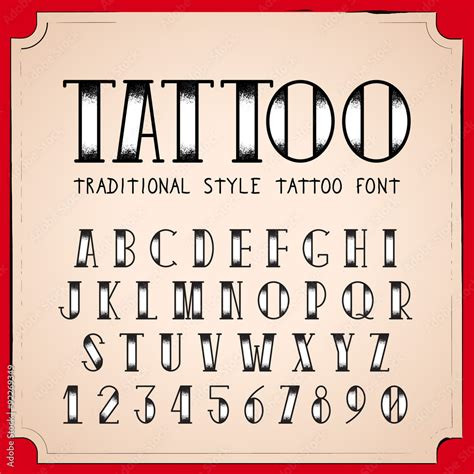 Classic tattoo fonts guide
Classic tattoo fonts guide
Classic tattoo fonts represent a diverse category, encompassing a wide array of lettering styles and design philosophies. These fonts are generally recognized by their strong, clean lines, often coupled with decorative elements and a distinct vintage feel. Their versatility allows them to be seamlessly integrated into various tattoo designs, ranging from minimalist text-based pieces to complex, illustrative compositions. The enduring popularity of classic tattoo fonts stems from their timeless aesthetic, adaptability to different themes, and their inherent ability to imbue tattoos with both emotion and deeper meaning.
A Glimpse into the History of Classic Tattoo Fonts
The origins of classic tattoo fonts are intertwined with the early 20th-century tattoo scene, a period marked by the rise of “traditional” or “old school” tattooing. Sailors, often credited as key figures in popularizing tattooing in the West, played a crucial role in shaping these fonts. As they traveled the globe, they encountered and adopted diverse lettering styles from various cultures, including Asian calligraphy, European blackletter scripts, and American sign painting typography. These influences coalesced to form the foundation of what we now recognize as classic tattoo fonts. Over decades, these styles have been refined and reinterpreted by tattoo artists, resulting in the rich tapestry of classic fonts we see today. They remain a cornerstone of tattoo artistry, with contemporary artists continually drawing inspiration from and innovating upon these iconic styles.
Decoding the Characteristics of Classic Tattoo Fonts
 Characteristics of classic tattoo fonts
Characteristics of classic tattoo fonts
Classic tattoo fonts are identifiable by a set of recurring characteristics that contribute to their distinctive and enduring appeal. These features not only define their visual style but also influence the overall impact and readability of the tattoo. Key characteristics include:
- Bold Lines and Solid Strokes: Clarity and impact are paramount in classic tattoo fonts. Thick, bold lines ensure legibility and longevity, crucial for tattoos that need to withstand the test of time and skin aging.
- Decorative Flourishes and Ornate Details: While maintaining a strong structure, classic fonts often incorporate decorative elements such as serifs, swashes, and flourishes. These details add character, visual interest, and a touch of vintage elegance to the lettering.
- Timeless Aesthetic and Enduring Appeal: Perhaps the most defining characteristic is their timeless quality. Classic tattoo fonts transcend fleeting trends, offering a style that remains relevant and visually appealing across generations. They evoke a sense of heritage and tradition in tattooing.
- Versatility and Adaptability: Despite their distinct style, classic tattoo fonts are remarkably versatile. They can be adapted to suit a wide range of tattoo themes, from nautical and Americana to gothic and romantic styles.
- Emotional Resonance and Meaningful Conveyance: The strong visual presence and historical associations of classic fonts contribute to their ability to effectively convey emotions and meaning. They can project strength, romance, rebellion, or nostalgia, depending on the specific style and context.
Exploring Popular Classic Tattoo Font Styles
The world of classic tattoo fonts is rich and varied, with numerous styles each possessing a unique character and historical context. Understanding these styles is key to selecting the perfect font for your tattoo. Here are some of the most popular and recognizable classic tattoo font styles:
- Old English: Synonymous with gothic scripts, Old English is characterized by its dramatic, bold, and highly decorative letterforms. It evokes a sense of history, formality, and strength. Often used for names, dates, and powerful statements.
- Script: Script fonts mimic elegant handwriting, featuring flowing, cursive letters and graceful flourishes. They convey sophistication, romance, and personalization. Popular for quotes, names, and sentimental phrases. Variations include Blackletter scripts (more gothic) and Brush scripts (more casual and flowing).
- Block: Block fonts are defined by their strong, geometric shapes, clean lines, and minimal embellishments. They project a sense of boldness, clarity, and straightforwardness. Ideal for impactful words, initials, or when legibility is paramount.
- Gothic: While sometimes used interchangeably with Old English, Gothic can encompass a broader range of blackletter styles. These fonts are known for their intricate, angular forms and dramatic presence, often associated with medieval aesthetics and a sense of mystery or intensity.
- Celtic: Inspired by traditional Celtic knotwork and Insular script, Celtic fonts feature intricate, interwoven patterns and stylized letterforms. They represent heritage, interconnectedness, and a mystical or ancient feel.
- Tribal: While not strictly a font in the traditional sense, Tribal lettering draws inspiration from indigenous tribal art. It is characterized by bold, black lines, geometric shapes, and often incorporates tribal motifs. It conveys strength, heritage, and a connection to ancestral roots.
Choosing Your Ideal Classic Tattoo Font
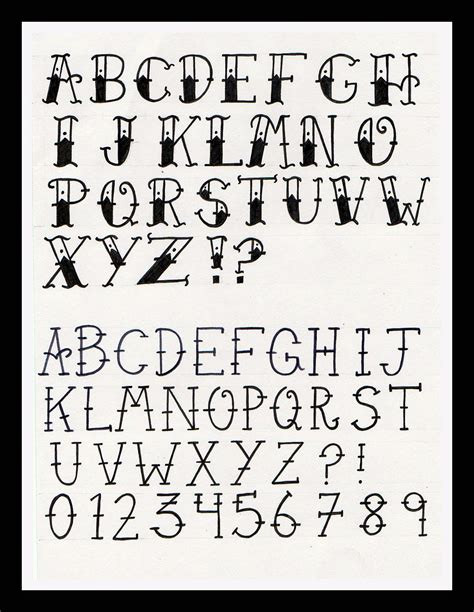 Choosing the perfect classic tattoo font
Choosing the perfect classic tattoo font
Selecting the right classic tattoo font is a crucial step in the tattoo design process. It requires careful consideration of several factors to ensure the font complements your design and effectively communicates your intended message. Here are some guiding tips:
- Reflect on Meaning and Emotion: Consider the core message and emotions you wish to convey with your tattoo. Do you want to project strength, elegance, romance, or rebellion? Different font styles carry different emotional weights. Old English might convey strength, while a script font might evoke sentimentality.
- Consider Tattoo Style and Theme: The overall style and theme of your tattoo should harmonize with your font choice. A nautical-themed tattoo might pair well with a bold block font, while a more delicate, floral design might be enhanced by a flowing script.
- Personal Resonance and Preferences: Choose a font that resonates with your personal style and preferences. Your tattoo is a personal statement, so selecting a font you genuinely love is essential.
- Experiment and Visualize: Before making a final decision, experiment with different font styles and combinations. Many online tools allow you to preview text in various tattoo fonts. Visualize how the font will look on your skin and consider its placement and size.
- Consult with Your Tattoo Artist: Your tattoo artist is an invaluable resource. Discuss your font preferences with them, and seek their expert advice. They can offer insights into font suitability for your design, placement, and skin type.
Practical Tips for Working with Classic Tattoo Fonts
Working effectively with classic tattoo fonts involves more than just selecting a style. It requires attention to detail and an understanding of how to optimize the font within the tattoo design. Here are some practical tips:
- Embrace Simplicity and Clarity: While classic fonts can be ornate, avoid over-complicating the design. Prioritize readability and ensure the font remains clear and legible, even with decorative elements.
- Balance Boldness and Delicacy: Strive for a balance between bold, structural elements and finer, decorative details. This creates visual interest and prevents the font from appearing too heavy or too delicate.
- Font Combinations – Use Sparingly: While mixing fonts can be done effectively, it’s generally best to stick to one or at most two complementary classic fonts within a single tattoo, especially if you are not experienced with typography. Overuse can create a cluttered or discordant look.
- Placement and Size Considerations: Carefully consider the placement of the tattoo on your body and the size of the font in relation to the surrounding design and body area. Larger fonts work well for bolder statements and larger areas, while smaller, more delicate fonts might be better suited for intricate designs or smaller spaces.
Classic Tattoo Font Inspiration
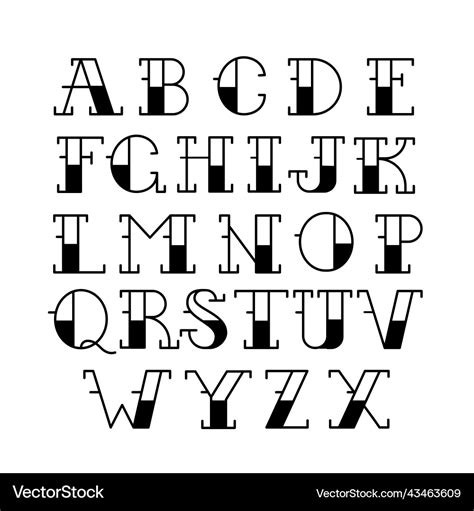 Classic tattoo font inspiration
Classic tattoo font inspiration
Seeking inspiration is a vital part of the tattoo design process. When it comes to classic tattoo fonts, there are numerous avenues to explore for ideas and creative direction:
- Delve into Tattoo History: Study the evolution of classic tattoo fonts, examining vintage tattoo flash sheets, historical photographs of tattoos, and the works of pioneering tattoo artists. Understanding the historical context can spark unique ideas.
- Explore Diverse Styles: Immerse yourself in the vast range of classic tattoo font styles. Browse online font libraries, typography websites, and tattoo portfolios to discover different styles and their nuances.
- Collaborate with Artists: Engage in conversations with tattoo artists. Discuss your ideas, explore their portfolios, and ask for their input on font choices and design concepts.
- Online Galleries and Platforms: Utilize online tattoo galleries, social media platforms, and design communities like Pinterest and Instagram. Search for “classic tattoo fonts,” “tattoo lettering,” and specific font styles to gather visual inspiration.
Designing Your Own Classic Tattoo Font
Creating a custom classic tattoo font design can be a rewarding endeavor, allowing for a truly unique and personalized tattoo. Here are steps to guide you through the process:
- Research and Inspiration Gathering: Begin by thoroughly researching classic tattoo fonts. Collect visual examples, analyze their characteristics, and identify elements you admire.
- Sketching and Experimentation: Start sketching and experimenting with different letterforms, weights, and decorative elements. Explore various font combinations and arrangements.
- Refinement and Detail Work: Once you have a basic design direction, refine your sketches. Pay attention to spacing, consistency, and the overall flow of the lettering. Add details and flourishes as desired.
- Professional Consultation: Consult with a tattoo artist or a graphic designer specializing in typography. Seek feedback on your design, and get advice on technical aspects, such as scalability and suitability for tattooing.
Classic Tattoo Fonts: Visual Gallery
Image Gallery of Classic Tattoo Fonts
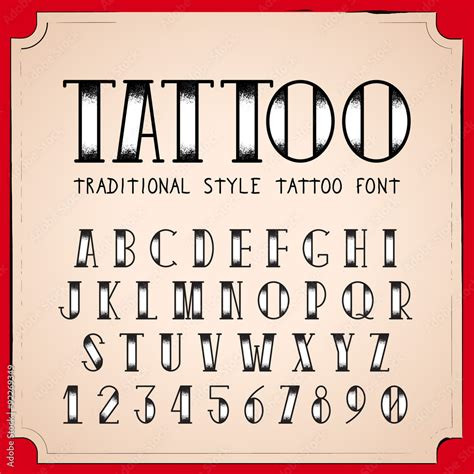 Classic tattoo fonts style
Classic tattoo fonts style
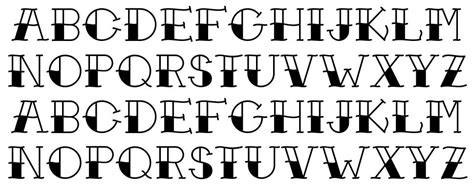 Classic tattoo font design
Classic tattoo font design
 Classic tattoo font inspiration
Classic tattoo font inspiration
 Classic tattoo font ideas
Classic tattoo font ideas
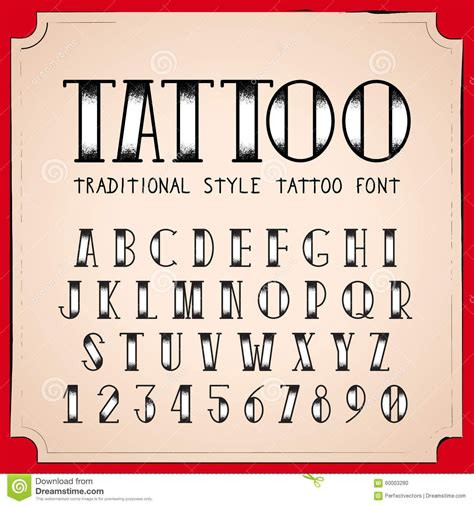 Classic tattoo font styles
Classic tattoo font styles
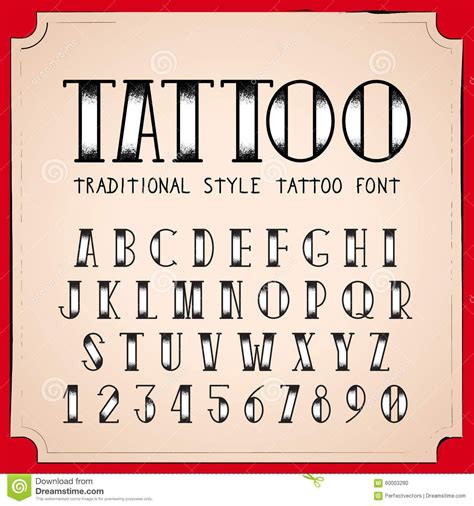 Classic tattoo font trends
Classic tattoo font trends
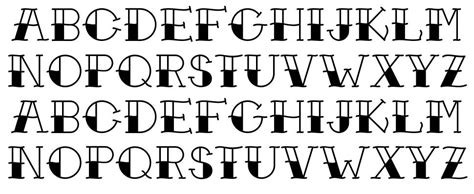 Classic tattoo font designs
Classic tattoo font designs
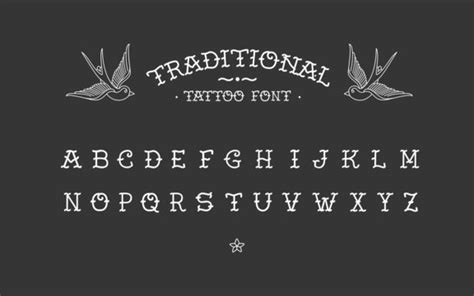 Classic tattoo font templates
Classic tattoo font templates
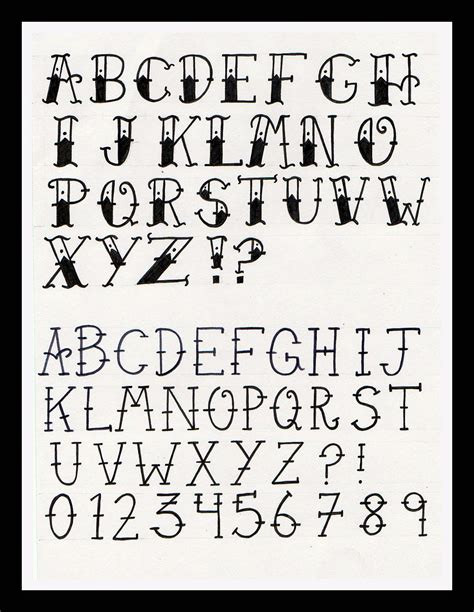 Classic tattoo font examples
Classic tattoo font examples
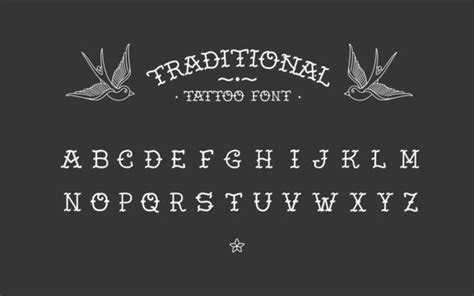 Classic tattoo font samples
Classic tattoo font samples
Frequently Asked Questions
What is considered the most popular classic tattoo font style?
- The Old English font style is widely recognized as the most popular classic tattoo font. Its bold, gothic aesthetic and intricate details lend a timeless and powerful appeal to tattoos.
How can I determine the best classic tattoo font for my specific design?
- To choose the perfect classic tattoo font, consider the intended meaning and emotion of your tattoo, align the font with the overall style and theme of your design, and select a font that resonates with your personal taste and preferences. Consulting with a tattoo artist is also highly recommended.
Is it possible to create a unique classic tattoo font design myself?
- Yes, you absolutely can design your own classic tattoo font. The process involves research and inspiration gathering, sketching and experimenting with letterforms, refining your design, and seeking professional feedback from artists or typographers.
What are the defining characteristics of classic tattoo fonts?
- Classic tattoo fonts are typically characterized by bold lines, ornate details, and a vintage or timeless feel. They often feature intricate designs, decorative flourishes, and embellishments that contribute to their distinctive aesthetic and emotional impact.
What are essential tips for effectively working with classic tattoo fonts in tattoo designs?
- Key tips for working with classic tattoo fonts include maintaining simplicity and clarity in the design, balancing bold and delicate elements, carefully considering font combinations, and paying close attention to the placement and size of the font in relation to the overall tattoo composition and body area.
In conclusion, classic tattoo fonts represent a rich and enduring tradition within tattoo art, offering a diverse palette of styles to express a wide spectrum of emotions and messages. By understanding their historical context, characteristic features, and popular styles, and by following the tips outlined for selection and application, you can create truly unique and meaningful tattoo designs that stand the test of time. Whether you are an artist seeking to expand your font repertoire or an individual planning your next tattoo, the world of classic tattoo fonts offers limitless creative possibilities. We encourage you to explore these timeless lettering styles and discover the perfect classic font to bring your tattoo vision to life.